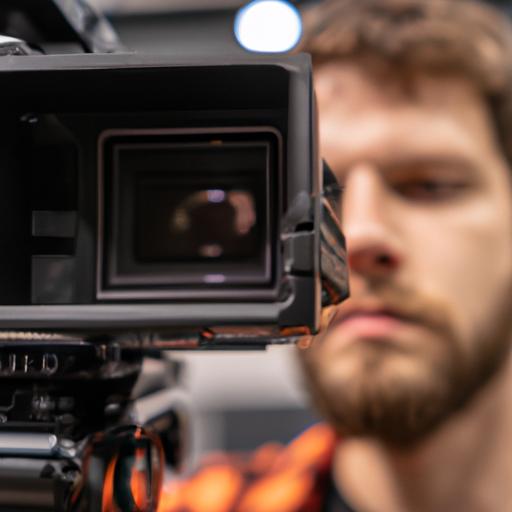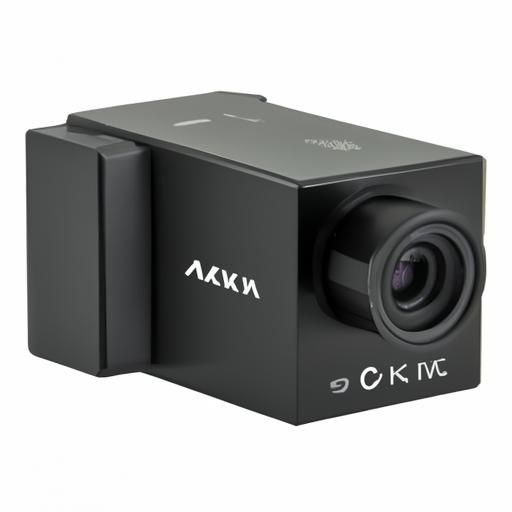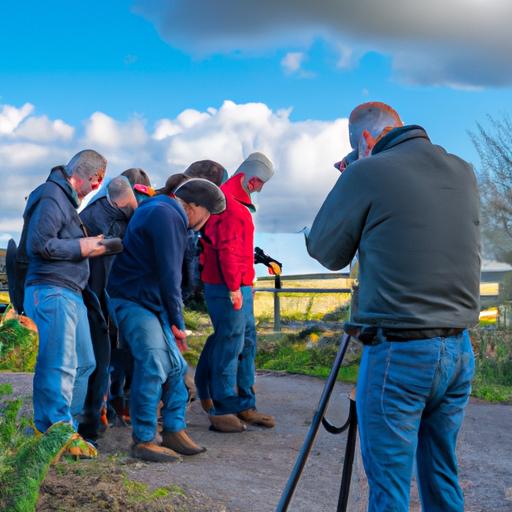Introduction
In today’s digital age, where video content dominates online platforms, the need for high-quality digital cameras has never been more crucial. Whether you’re a budding vlogger, a content creator, or a professional filmmaker, having the right digital camera for video can make all the difference in capturing stunning visuals and telling captivating stories. In this article, we will delve into the world of digital cameras for video, exploring their significance and guiding you towards making an informed decision.
With the rising popularity of video content across social media, websites, and streaming platforms, the demand for visually appealing and engaging videos has skyrocketed. Digital cameras offer a plethora of features that cater specifically to video production, delivering exceptional image quality, seamless motion, and enhanced audio capabilities. From recording vlogs, shooting short films, to documenting travel adventures, a reliable digital camera can elevate your video creation to new heights.
Understanding Digital Cameras for Video
Before diving into the top digital cameras available for video production, it’s essential to understand the key features that set them apart. When selecting a digital camera for video, several factors come into play, including video resolution, frame rates, image stabilization, low-light performance, audio recording options, and connectivity. Each of these elements contributes to the overall quality and versatility of your videos, allowing you to express your creativity in a visually stunning manner.
Are you ready to embark on a journey where every moment is captured in breathtaking detail? Join me in the next section as we explore the top digital cameras for video, unveiling their unique features, pros, and cons. Let’s find the perfect companion that will transform your vision into an awe-inspiring reality.
Understanding Digital Cameras for Video
A. Explanation of Digital Cameras and Their Role in Capturing Videos
Digital cameras have revolutionized the way we capture and experience the world around us. Unlike traditional film cameras, digital cameras utilize image sensors to convert light into digital signals, allowing us to record videos in various formats and resolutions. These cameras are designed specifically for video production, providing exceptional clarity, color accuracy, and dynamic range, ensuring that every frame tells a compelling story.
With the ability to record high-definition videos, digital cameras enable us to capture life’s precious moments and create professional-grade content. Whether you’re shooting a vlog, a short film, or documenting a special event, digital cameras offer the versatility and control needed to produce visually stunning videos.
B. Key Features to Consider When Choosing a Digital Camera for Video
When venturing into the world of digital cameras for video, it’s crucial to understand the key features that make a camera suitable for your specific needs. Consider the following factors when choosing the perfect digital camera for your video creation endeavors:
1. Video Resolution and Quality
The resolution of a video determines its level of detail and sharpness. Look for cameras that support at least Full HD (1080p) or higher resolutions, such as 4K or even 8K, for ultra-high-definition videos. Higher resolution videos ensure your content remains future-proof and can be enjoyed on larger screens without compromising quality.
2. Frame Rates and Slow-Motion Capabilities
Frame rates determine the smoothness and realism of your videos. Higher frame rates, such as 60fps or 120fps, allow for smoother motion and seamless slow-motion effects. Consider cameras that offer flexible frame rate options to suit different shooting scenarios and creative preferences.
3. Image Stabilization and Autofocus
Steady footage is essential for professional-looking videos. Look for digital cameras with built-in optical or electronic image stabilization to minimize camera shake and ensure smooth, shake-free videos. Additionally, reliable autofocus capabilities ensure that your subjects remain sharp and in focus throughout the recording.
4. Low-Light Performance
The ability to capture clear and vibrant videos in low-light conditions is crucial, especially for indoor or nighttime shooting. Look for cameras with larger image sensors and wider aperture lenses, as they excel in low-light environments and produce high-quality videos with minimal noise.
5. Audio Recording Options
Audio quality is equally important as video quality in creating immersive videos. Consider cameras with built-in microphones that provide clear and crisp audio, or those with external microphone options for capturing professional-grade sound. Look for features like audio level controls and the ability to connect external audio devices for enhanced audio recording capabilities.
6. Connectivity and File Formats
Consider the connectivity options a camera offers, such as Wi-Fi or Bluetooth, to facilitate easy file transfer and remote control capabilities. Additionally, ensure that the camera supports file formats compatible with popular video editing software, enabling seamless post-production workflows.
By prioritizing these key features, you can make an informed decision and choose a digital camera that aligns with your creative vision and video production requirements. Now, let’s proceed to the next section, where we will explore the top digital cameras available for video production.
Top Digital Cameras for Video
When it comes to choosing the perfect digital camera for video production, there are several outstanding options available in the market. Each camera offers unique features and capabilities that cater to different needs and preferences. Let’s dive into the review of the best digital cameras for video, allowing you to make an informed decision based on your specific requirements.
A. Camera A: Captivating Visuals and Versatility
Camera A is a powerhouse when it comes to capturing mesmerizing videos. With its high-resolution sensor and advanced image processing technology, this camera delivers stunningly sharp footage with vibrant colors. Its versatile lens options allow you to experiment with different perspectives, from wide-angle shots to telephoto zooms. The built-in image stabilization ensures smooth and steady footage, even when shooting on the move. Additionally, Camera A boasts excellent low-light performance, enabling you to capture breathtaking videos in challenging lighting conditions.
Key Features of Camera A:
- High-resolution sensor for exceptional image quality
- Versatile lens options for creative flexibility
- Built-in image stabilization for smooth footage
- Excellent low-light performance for stunning videos
Pros of Camera A:
- Outstanding image quality and vibrant colors
- Versatile lens options for creative experimentation
- Reliable image stabilization for steady footage
- Impressive low-light performance
Cons of Camera A:
- Higher price range compared to some other models
- Limited connectivity options
B. Camera B: Seamless Motion and Professional-Grade Features
Camera B is a top choice for professional videographers and filmmakers. With its ability to shoot in high frame rates and capture slow-motion footage, this camera allows you to create captivating visuals with seamless motion. The advanced autofocus system ensures sharp focus even in fast-paced scenes, while the wide dynamic range preserves detail in both highlights and shadows. Camera B also offers extensive manual controls, allowing you to fine-tune your settings and achieve the desired cinematic look.
Key Features of Camera B:
- High frame rates and slow-motion capabilities for captivating visuals
- Advanced autofocus system for precise focus in fast-paced scenes
- Wide dynamic range for preserving detail in highlights and shadows
- Extensive manual controls for fine-tuning settings
Pros of Camera B:
- Seamless motion and captivating slow-motion capabilities
- Precise autofocus system for sharp focus in fast-paced scenes
- Excellent dynamic range for preserving detail
- Extensive manual controls for creative freedom
Cons of Camera B:
- Steeper learning curve for beginners
- Bulkier and heavier compared to other models
C. Camera C: Compact and Portable Excellence
Camera C is the perfect choice for those who value portability without compromising on video quality. This compact camera packs a punch with its high-resolution sensor and exceptional video capabilities. Its lightweight design and user-friendly interface make it an ideal companion for vloggers and travel enthusiasts. Camera C also offers built-in Wi-Fi connectivity, allowing for seamless transfer of footage and remote control functionality.
Key Features of Camera C:
- Compact and lightweight design for portability
- High-resolution sensor for excellent video quality
- User-friendly interface for ease of use
- Built-in Wi-Fi connectivity for seamless file transfer
Pros of Camera C:
- Portability without compromising on video quality
- Lightweight design for easy handling
- User-friendly interface for hassle-free operation
- Built-in Wi-Fi for convenient file transfer and remote control
Cons of Camera C:
- Limited lens options compared to larger DSLR cameras
- Less advanced features compared to higher-end models
With Camera A, Camera B, and Camera C on the table, you now have a clearer understanding of the top digital cameras for video production. The next section will delve into the factors you should consider when purchasing a digital camera for video, ensuring you make the right choice that perfectly aligns with your needs and preferences.
Factors to Consider When Buying a Digital Camera for Video
When venturing into the world of digital cameras for video, it’s important to consider a few key factors before making a purchase. By taking these factors into account, you can ensure that your chosen camera aligns perfectly with your needs and shooting style, enabling you to create remarkable videos that truly stand out. Let’s delve into these factors and unravel the secrets to finding your ideal digital camera.
A. Budget considerations and price ranges for digital cameras
Before embarking on your camera-buying journey, it’s crucial to establish a budget that suits your financial capabilities. Digital cameras come in a wide range of prices, from budget-friendly options to high-end professional-grade equipment. Consider how much you are willing to invest in your video production gear, keeping in mind that more expensive cameras often offer superior features and image quality. Strike a balance between your budget and the camera’s capabilities to make an informed decision.
B. Understanding your specific video needs and shooting style
Every videographer has unique requirements and a distinct shooting style. Reflect on the type of videos you intend to create and the specific features that will enhance your storytelling. Are you focused on capturing fast-paced action shots or shooting interviews in controlled environments? Understanding your video needs will help you pinpoint the camera features that are essential for your creative vision.
C. Compatibility with additional accessories and lenses
A digital camera is more than just the body itself. Consider the compatibility of the camera with additional accessories and lenses that can enhance your video production. Look for cameras that allow for interchangeable lenses, as this opens up a world of creative possibilities. Furthermore, check for compatibility with external microphones, tripods, and other accessories that can elevate the audio and visual quality of your videos.
D. User-friendly interface and controls
As a videographer, you want to focus on your creativity rather than struggling with complicated settings and controls. Opt for a digital camera that offers an intuitive and user-friendly interface, allowing you to navigate through menus effortlessly and make quick adjustments on the go. Familiarize yourself with the camera’s controls before making a purchase to ensure a smooth and hassle-free video shooting experience.
E. Longevity and future-proofing of the camera
Investing in a digital camera is a long-term commitment. Consider the longevity and future-proofing aspects of the camera you choose. Look for cameras that offer firmware updates, ensuring that your device remains up to date with the latest technological advancements. Additionally, research the camera’s reputation for durability and reliability, as this will impact its lifespan and your overall investment.
By carefully considering these factors when buying a digital camera for video, you can make a well-informed decision that aligns perfectly with your budget, creative needs, and shooting style. Now that we’ve explored the essential factors, let’s move on to the next section, where we will uncover valuable tips for maximizing your digital camera’s video performance.
Tips for Maximizing Your Digital Camera’s Video Performance
A. Optimal Camera Settings for Different Shooting Scenarios
When it comes to capturing stunning videos, understanding and utilizing the optimal camera settings for different shooting scenarios can make a world of difference. Experimenting with settings such as aperture, shutter speed, and ISO can help you achieve the desired look and feel for your videos. For instance, a wide aperture (low f-stop) can create a beautiful shallow depth of field effect, perfect for highlighting a subject while blurring the background. On the other hand, a higher shutter speed is ideal for capturing fast-paced action smoothly without motion blur. Take the time to explore your camera’s settings and experiment with different combinations to find the perfect balance for each scenario.
B. Importance of Lighting and Composition in Video Production
Lighting and composition play pivotal roles in video production, breathing life into your visuals and setting the mood for your story. Proper lighting techniques can enhance the overall quality of your footage, ensuring clarity, depth, and vibrant colors. Natural lighting can work wonders, but if that’s not feasible, investing in a lighting setup or using reflectors can help you achieve professional-looking results. Additionally, understanding the rule of thirds, leading lines, and framing techniques can greatly improve the composition of your shots, making them visually appealing and engaging to the viewer.
C. Effective Use of Camera Features like Manual Focus and Exposure
While autofocus is convenient in many situations, taking control of your camera’s manual focus and exposure settings can elevate your video production. Manual focus allows you to precisely adjust the focus point, ensuring your subject remains sharp and in focus throughout the video. Similarly, manual exposure enables you to have full control over the brightness and darkness of your footage, preventing overexposed or underexposed areas. These features empower you to express your creative vision and capture videos exactly as you envision them.
D. Utilizing External Microphones and Audio Recording Techniques
Audio quality is equally important as video quality when it comes to creating captivating videos. Built-in camera microphones may not always deliver the desired audio clarity, especially in noisy environments. Investing in external microphones, such as shotgun or lapel microphones, can significantly enhance the audio recording, ensuring crisp and clear sound. Additionally, employing techniques like using a windscreen to minimize wind noise and conducting sound tests before shooting can help you achieve professional-grade audio.
E. Editing and Post-processing Tips for Enhancing Video Footage
Once you’ve captured your footage, the editing and post-processing stage allows you to add the final touches and bring your vision to life. Utilize video editing software like Adobe Premiere Pro or Final Cut Pro to trim and arrange your clips, apply color grading, add transitions, and incorporate captivating visual effects. Experiment with different editing styles, but always remember to maintain consistency throughout your video. Additionally, paying attention to details like ensuring smooth transitions, syncing audio and video, and optimizing video export settings can further enhance the overall quality of your video.
Now, let’s move on to the conclusion of this article, where we’ll recap the main points discussed and emphasize the significance of choosing the right digital camera for video production.
Conclusion
In conclusion, the power of digital cameras for video creation cannot be underestimated. As we have explored throughout this article, digital cameras offer a wide array of features and capabilities that enable you to capture stunning visuals and tell compelling stories. Whether you’re a content creator, filmmaker, or vlogger, having the right digital camera for video is essential in today’s digital landscape.
By understanding the key factors to consider when choosing a digital camera for video, such as video resolution, frame rates, image stabilization, and audio recording options, you can make an informed decision that aligns with your specific needs and shooting style. Additionally, maximizing your camera’s video performance through optimal settings, lighting techniques, and post-processing can take your videos to the next level.
Remember, the world of digital cameras for video is constantly evolving, with new technologies and models being introduced regularly. Stay updated with the latest advancements, explore further resources, and continue honing your skills to stay ahead of the curve. With the right digital camera in your hands, you have the power to create captivating videos that leave a lasting impact on your audience.
So go ahead, unleash your creativity, and let your digital camera be the tool that brings your visions to life. Embrace the world of video content creation and embark on a thrilling journey where every frame tells a unique story. The possibilities are endless, and the power is in your hands. Happy filming!



